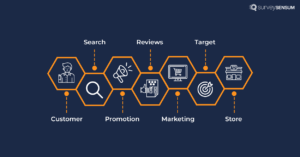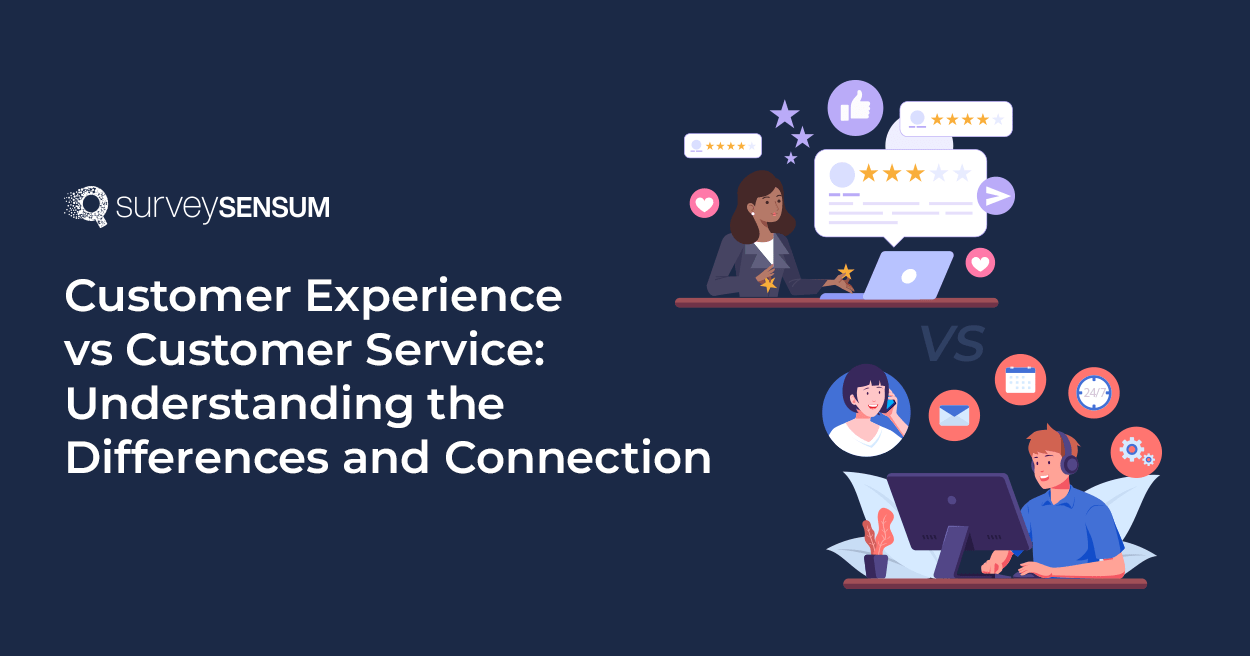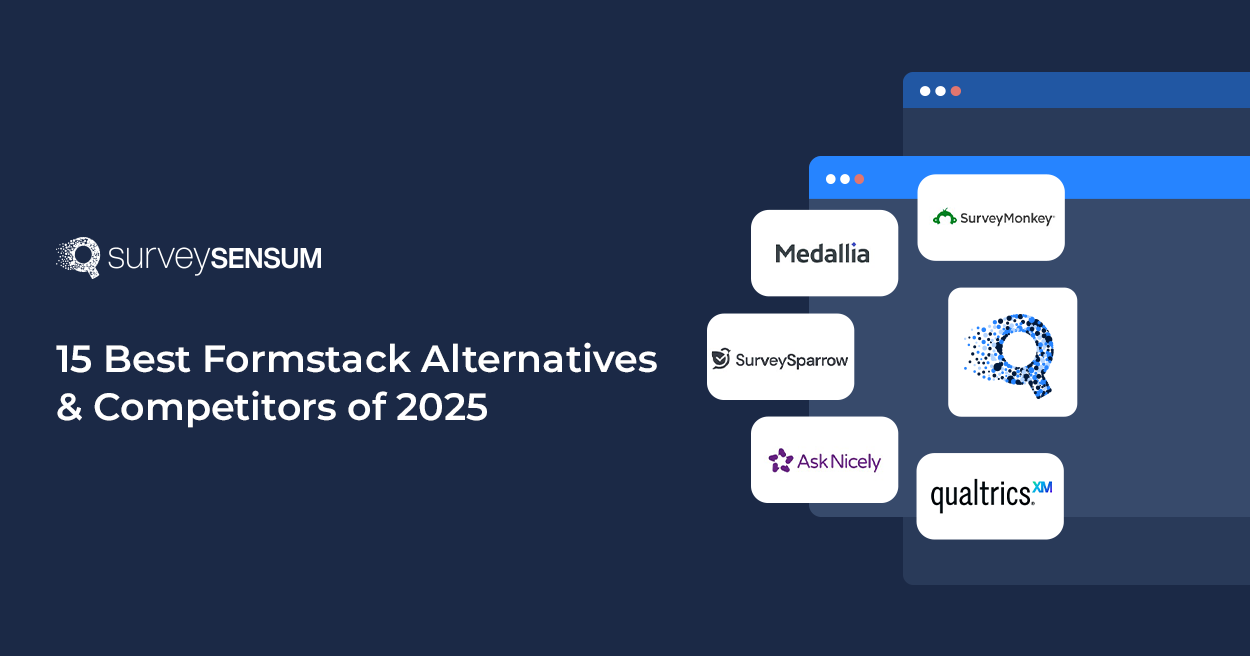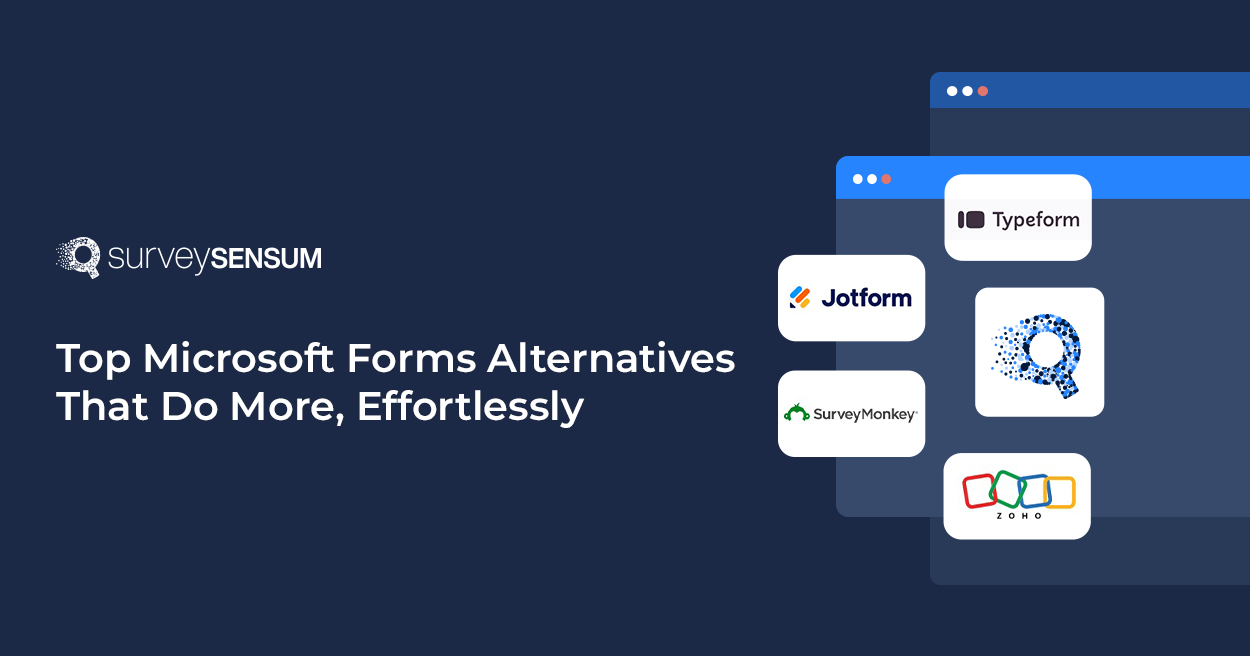
Do you often use ‘customer experience’ and ‘customer service’ interchangeably?
If your answer is yes, then my friend you are doing it wrong.
Because these two terms hold distinct meanings and should not be used interchangeably.
This brings us to the debate of customer experience vs customer service. Understanding the differences between both is vital for your business to thrive in the customer-centered world.
In this blog, we will explore the same. What are customer experience and customer service, how they’re connected, their differences, why do they matter for your business, and how a customer feedback platform can help you ease your work to enhance the overall experience?
So, let us begin this journey of customer experience vs customer service to uncover what keeps customers not just satisfied but genuinely delighted with your brand.
Customer Experience (CX)
Customer experience is all about the journey your customers take when they interact with your brand or business. It covers every step of the way, starting from the moment they first learn about your product or service.
But, why is it so important?
Why is CX important?
There are several reasons that signify how crucial CX is:
- Fosters Customer Loyalty: 86% of consumers are willing to pay more for a superior customer experience. A great CX is key to building customer loyalty and encouraging repeat business.
- Shapes Brand Reputation: Customers spend 140% more and remain loyal for up to 6 years when they rate a brand highly for customer experience. A positive CX can lead to word-of-mouth recommendations, boosting your brand’s reputation. On the flip side, a negative experience can quickly erode the trust your customers have in your brand.
- Provides a Competitive Edge: In today’s world, where many products or services offer similar features, the quality of your customer experience can be a game-changer.
- Drives Revenue and Growth: Companies with strong customer experience see a revenue increase of 4-8% and can achieve 5.7 times more revenue growth than competitors who lag in customer experience. Satisfied customers are more likely to make repeat purchases, leading to business growth and increased profits, and a seamless omnichannel integration of the platform.
Now that you know the importance of customer experience, let’s talk about the customer journey.
Customer Journey
 A customer journey is the path customers take when interacting with a business – covering everything from discovering a product to deciding to buy and the follow-up interactions.
A customer journey is the path customers take when interacting with a business – covering everything from discovering a product to deciding to buy and the follow-up interactions.
For example, in the world of e-commerce, the customer’s journey involves aspects like website usability, product selection, the checkout process, and how effective customer support is.
Now comes a question – How to measure customer experience?
Measuring Customer Experience
You can gauge the quality of your customer experience by using common metrics like the Net Promoter Score, Customer Satisfaction Score, and Customer Effort Score. These metrics assess how exceptional your customers’ experiences are. Additionally, tracking relevant call center metrics can provide deeper insights into customer service performance, helping businesses identify areas for improvement.
Let’s talk about Customer Service.
Customer Service
Customer service is the support and assistance provided to customers before, during, and after their interaction with a company.
It encompasses a wide range of services, including in-person interactions, phone support through advanced inbound calling software, email correspondence, live chat, self-service options, and assistance through social media platforms like Twitter or Facebook.
But is it really important to customers?
Why is Customer Service Important?
Customer service is crucial for several reasons:
- Enhances Customer Loyalty: 70% of customers say that they would spend more to get great customer service. And this leads to an increase in your business as well as their loyalty.
- Influences Brand Perception: 80% of customers will stop doing business with a brand and move to a competitor after more than one bad customer service experience.
- Drives Business Growth: 93% of customers are likely to make repeat purchases with companies that offer excellent customer service. This highlights how customer service drives business growth.
Now you must be thinking about offering great customer service to your customers after knowing its importance, right?
How to Offer Excellent Customer Service?
To offer exceptional customer service, ensure:
- Prompt Responses to customer inquiries.
- Effective Communication to clearly address customer issues and concerns.
- Tailor interactions to meet individual customer expectations and needs.
- Pay attention to customer feedback and make improvements accordingly.
- Empathy to show genuine understanding and concern for customer problems.
By excelling in these aspects, businesses can build and maintain positive relationships with customers, leading to success and growth.
With that let’s move ahead to our next section talking about the key differences between customer experience and service.
Customer Experience vs Customer Service The Key Differences
| Customer Experience | Customer Service |
| Covers the entire customer journey, from start to finish | Deals with specific customer interactions or questions |
| Builds lasting relationships | Resolves issues immediately |
| Involves the entire company, ensuring a consistent journey | Typically managed by a specific department, often the customer support team |
| Metrics like NPS and CSAT provide insights into the overall experience | Metrics focus on response times, issue resolution rates, and interaction quality during specific support requests |
| Everyone in the organization contributes to a proactive approach throughout the journey | Handled by the customer support team, with a reactive focus on issue resolution |
| Proactively anticipates and fulfills customer needs, aiming for a delightful journey | Primarily reactive, responding to customer issues and focusing on solving them |
Let’s dive deeper —
1. Scope
- CX encompasses the entire journey a customer embarks upon when engaging with your brand. From the initial interaction to post-purchase, it includes the overall customer experience.
- Customer service, on the other hand, focuses on single interactions when customers seek immediate assistance or have specific inquiries.
2. Focus
- The primary goal of CX is to create a holistic, positive impression and ensure customer satisfaction across the entire journey. It’s about building enduring customer relationships and ensuring that every interaction contributes positively to the overall experience.
- Customer service focuses on addressing immediate concerns and issues. Its primary objective is to provide quick and effective solutions to customer problems during specific touchpoints.
3. Timeframe
- CX is a long-term strategy, focusing on continuous improvement throughout the customer journey. It is an ongoing process dedicated to nurturing long-lasting customer relationships.
- Customer service is designed for short-term, immediate interactions and problem-solving. It deals with resolving current issues and addressing customers’ immediate needs.
4. Company-wide vs. Departmental
- CX is a company-wide approach, involving the entire organization. All departments collaborate to ensure a consistent and positive customer journey.
- Customer service is typically associated with a specific department within the company, often handled by a customer support team.
5. Measuring Tools
- Metrics for CX include Net Promoter Score, Customer Satisfaction Score, and Customer Effort Score. These metrics provide insights into the overall customer experience.
- Metrics for customer service typically revolve around response times, issue resolution rates, and the quality of interactions during specific support requests.
For example, a customer experience team would measure Net Promoter Score and service teams would look at Average Response Time.
6. Ownership
- Everyone in the organization is responsible for creating a positive overall customer experience, from marketing to product development. Customer experience is proactive and spans the entire customer journey.
- The customer support team handles specific customer interactions and resolves issues as they arise.
7. Approach
- CX takes a proactive approach by anticipating and fulfilling customer needs before they even express them, aiming to create a seamless and delightful customer journey.
- Customer service, on the other hand, is primarily reactive, as it responds to customers’ issues and inquiries as they occur, focusing on issue resolution.
These differences highlight that while both CX and customer service are essential for customer satisfaction, they serve distinct roles within the broader framework of a customer-centric approach.
Enhance Your Customer Experience With SurveySensum- Request a Demo
CX and Customer Service – The Connection
Delivering great customer service directly contributes to positive experiences, provides valuable feedback to enhance CX, and plays a pivotal role in determining customer loyalty. Following are the 3 connections:
1. Great customer service leads to positive experiences
When you visit your favorite restaurant, do they offer only food?
No, right?
They also offer their hospitality via helpful and friendly staff also they make a menu according to their customer preferences.
And this service makes your dining experience better, right?
Similarly is the case with your business. When you offer excellent customer service, it means you’re really good at helping and supporting your customers. This directly results in customers having a good time and feeling happy when they interact with your company.
This is how good customer service creates positive customer experiences.
2. Customer service provides valuable feedback to improve CX
Imagine you’re baking cookies, and someone tastes them and says, “These need more chocolate chips!” That real-time feedback helps you make better cookies, right?
Similarly, customer service isn’t just about solving problems; it’s also a way to gather feedback from customers. This feedback is valuable for you because when customers talk to customer support, they often share what they like about your company’s products or services and vice versa.
This gathered positive customer feedback can be used to make the overall customer experience better. That’s how customer service helps a company figure out how to improve what they offer.
3. Customer service makes or breaks customer loyalty
Companies that rank customer service as a top priority are 6 times more likely to surpass their customer retention goals.
When a company provides great customer service, it builds trust and loyalty with its customers. This also increases customer retention leading to growth in your business. On the other hand, if a company provides bad customer service, it pushes customers away. This leads them to look for other companies that treat them better.
Good customer service can keep customers and encourage recommendations, while poor service may drive them away and harm your reputation. This highlights the connection between customer service and customer experience – getting them right can build customer loyalty, and retention, prevent customer churn, and ultimately more profit.
Key Takeaways
We’ve explored everything about the customer experience and customer service along with their differences and connections. Here’s a quick recap:
- Customer Experience is the overall feeling customers have about a company, while Customer Service is the support and help a company offers.
And the main difference between them is
- CX includes the whole journey, from discovering a product to using it.
- Customer Service is a part of CX, mainly focused on solving problems.
And the connection between them is
- Great customer service leads to positive customer experiences. It gathers feedback to improve CX, and it plays a vital role in keeping customers loyal.
In simple terms, good service makes customers happy, provides valuable insights for improvement, and keeps them coming back. To enhance your own customer experience and service, consider using SurveySensum. It’s a tool that can help you gather feedback effortlessly and make your customers even happier.















